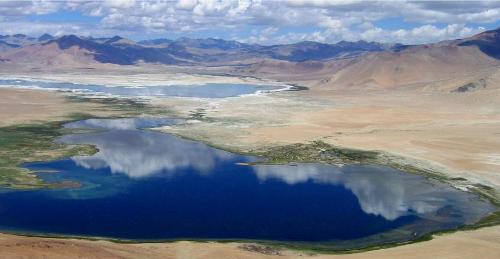Navinder Singh
Other projects
This study will monitor population status, and investigate the distribution and habitat selection of the subspecies, sexual differences in habitat selection and causes of sexual segregation, which should enable better conservation planning for this population.

Tso Kar- a complete overview of the the Tso Kar basin.
Tibetan argali (Ovis ammon hodgsoni) is a globally threatened species with a small population surviving in Ladakh, India. Argali had been hunted throughout its range for trophy and meat in the past. Our preliminary data based on recent surveys on argali status and conservation shows that the Tso Kar Basin population is probably the largest in Ladakh with an estimated 80 argali and another 60 or more in the adjoining Gya Miru wildlife sanctuary, which makes a total of about 150 animals in and around the study area including Gya Miru. The Tso Kar basin represents a small part of the typical Tibetan plateau landscape in India located in eastern Ladakh.
The studies on pastoral history indicate that livestock grazing has existed here since several millennia; however grazing has intensified in recent years (due to changing pastoral practices and increased demand for cashmere). The pastoral practices changed due to influx of Tibetan refugees that entered from China, and the areas, which were used once a year earlier, began to be used all year round. Erratic precipitation and livestock grazing both potentially have negative consequences on forage availability and wild animals. Due to recent climatic changes the precipitation patterns have changed. Global climate change models also predict a change in precipitation towards more extreme precipitation events and increased winter precipitation.
Developmental activities also have not remained far behind, and intensive tourism and construction work is taking place in the area. Intensified use of pastures and developmental activities are prime threat to the survival of this small population of argali in the region. To identify the conservation measures, one needs unveil the ecological information about how animals select habitat and resources in their environment. Sexual differences in habitat and area use can cause important differences in foraging and other forms of behaviour, as well as in performance and survival of sexes. Therefore, our study will monitor population status, and investigate the distribution and habitat selection of the subspecies, sexual differences in habitat selection and causes of sexual segregation, which should enable better conservation planning for this population.